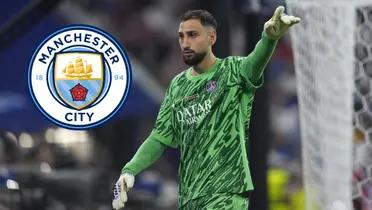MLS and Premier League: What similarities and differences exist between the two leagues?
Discover the similarities and differences between MLS and the Premier League: Did you know them all?

Major League Soccer (MLS) and the Premier League are two of the world’s most prominent football leagues, each with unique characteristics reflecting their cultural and sporting contexts. While both share a passion for football, they exhibit significant differences in areas such as history, structure, competitive level, and international projection.
History and origins of the leagues
Foundation and development of the Premier League
The Premier League, established in 1992, emerged as an evolution of England’s former First Division. Its creation aimed to modernize English football, attract greater investment, and elevate the competitive level. Since then, it has solidified its reputation as one of the world’s most prestigious leagues, renowned for its intensity and quality of play.
Birth and evolution of MLS
In contrast, MLS was founded in 1993 and began operations in 1996 as part of the United States’ efforts to establish a professional football league following the 1994 World Cup. Despite being relatively young, MLS has experienced remarkable growth, expanding its number of teams and improving its competitive quality.

Structure and competition format
Organization of the Premier League
The Premier League consists of 20 teams competing in a round-robin format, playing home-and-away matches throughout the season. The team with the most points at the end is crowned champion, while the bottom three teams are relegated to the Championship, England’s second division.
MLS format
MLS, on the other hand, features 29 teams divided into two conferences: East and West. Each team plays 34 regular-season matches against intra-conference opponents and select inter-conference rivals. After the regular season, the top teams from each conference advance to the playoffs, culminating in the MLS Cup, which determines the league champion. Unlike the Premier League, MLS does not implement a promotion and relegation system.
Competitive level and quality of play
Premier League: A standard of excellence
The Premier League is recognized for its high level of competition, attracting some of the best players and coaches globally. The intensity of matches and the depth of talent across teams position it as one of the most challenging and appealing leagues in the world.
Growth and development of MLS
While MLS has not yet reached the competitive level of the Premier League, it has shown significant progress over the past decades. The arrival of international stars, such as Lionel Messi at Inter Miami, has raised the league’s profile, drawing greater attention and improving the quality of play. Additionally, MLS is one of the most internationally diverse leagues, featuring players from 79 countries, surpassing even the Premier League in global representation.

Economic impact and popularity
Premier League: An economic powerhouse
The Premier League generates substantial revenue, primarily through broadcasting rights, sponsorships, and merchandising. Its global popularity attracts a wide international audience, cementing its status as one of the world’s most lucrative leagues.
MLS: Expansion and growth
MLS has seen steady growth in attendance and popularity. In the 2024 season, MLS recorded a total attendance of 13 million fans, surpassing leagues like the Bundesliga and LaLiga in this regard. This increase reflects the growing interest in football in the United States and the effectiveness of the league’s expansion strategies.
Talent development and player formation
The Premier League’s approach
The Premier League boasts high-level academies that nurture both local and international talent. Clubs like Manchester United and Chelsea have produced players who have excelled in the league and on international stages, contributing to the prestige of English football.
MLS initiatives
MLS has invested in youth academies and development programs to cultivate local talent. Historically reliant on international players to elevate its competitive level, the league has increasingly seen American players emerge as prominent figures, reflecting the success of its developmental efforts.
International projection and national team representation
Global influence of the Premier League
The Premier League has a significant presence in national teams worldwide, with numerous players regularly called up for international competitions. Its influence extends beyond Europe, shaping the development of football globally.
MLS contribution to national teams
MLS has increased its contributions to national teams, with 80 players called up for the October 2024 FIFA window, representing 40 different nations. This highlights the league’s growing quality and international recognition.
Conclusion
In summary, MLS and the Premier League have developed distinctive identities reflecting their contexts and objectives. While the Premier League stands out for its history, competitive level, and global reach, MLS demonstrates remarkable growth in popularity, diversity, and talent development. Both leagues continue to evolve, making significant contributions to the global football landscape.
More news

THE GANG IS HERE! First Argentine Stars Arrive in Buenos Aires for Final Qualifier Push!
01/09/2025

THE LAST DANCE! Lionel Messi Confirms His Final World Cup Qualifier in Argentina!
29/08/2025

TRANSFER COLLAPSES! Julio Enciso Fails Medical Exams, Returns to Brighton!
27/08/2025

Vini doesn't feel entirely comfortable at Real Madrid anymore and is seeking a future at another club
26/08/2025

HERE WE GO! Piero Hincapié Says YES to Arsenal, Club Prepares Final Bid for Leverkusen Star!
26/08/2025

THE REAL MADRID SHOWDOWN: Nico Paz's Future Sparks a Bidding War Across Europe!
25/08/2025

SOUTH AMERICAN SHAME: Independiente vs. U. de Chile Match Canceled After Horrific Incidents!
21/08/2025

Rodrygo Benched by Xabi Alonso: The End of an Era at Real Madrid?
20/08/2025

PARIS IN PARIS! The New Superclub, Paris FC, Rises to Threaten PSG-Marseille Rivalry!
20/08/2025

PSG’s €850M Budget is 30x Larger Than the Smallest in Ligue 1!
19/08/2025

THE DEBUTS ARE HERE! Estupiñán & Modrić Step Onto the San Siro Stage!
18/08/2025

CONTROVERSY IGNITES! Barcelona Opens Season with a Contested 2-0 Victory Over Mallorca!
18/08/2025

SCANDAL ESCALATES: Donnarumma's Harsh Letter Responds to Luis Enrique's Super Cup Snub!
15/08/2025

Franco Mastantuono: A New Number 30 for Real Madrid with a Nod to the Past
14/08/2025

HISTORY MADE! PSG Wins First-Ever Super Cup Title in Thrilling Penalty Shootout!
14/08/2025

Mastantuono Arrives at Valdebebas for Real Madrid Presentation
13/08/2025

ON AND OFF THE PITCH: Is Nicki Nicole the New WAG of Barcelona's Lamine Yamal?
13/08/2025

Donnarumma Bids Farewell to Paris Saint-Germain at the Peak of His Career
13/08/2025



